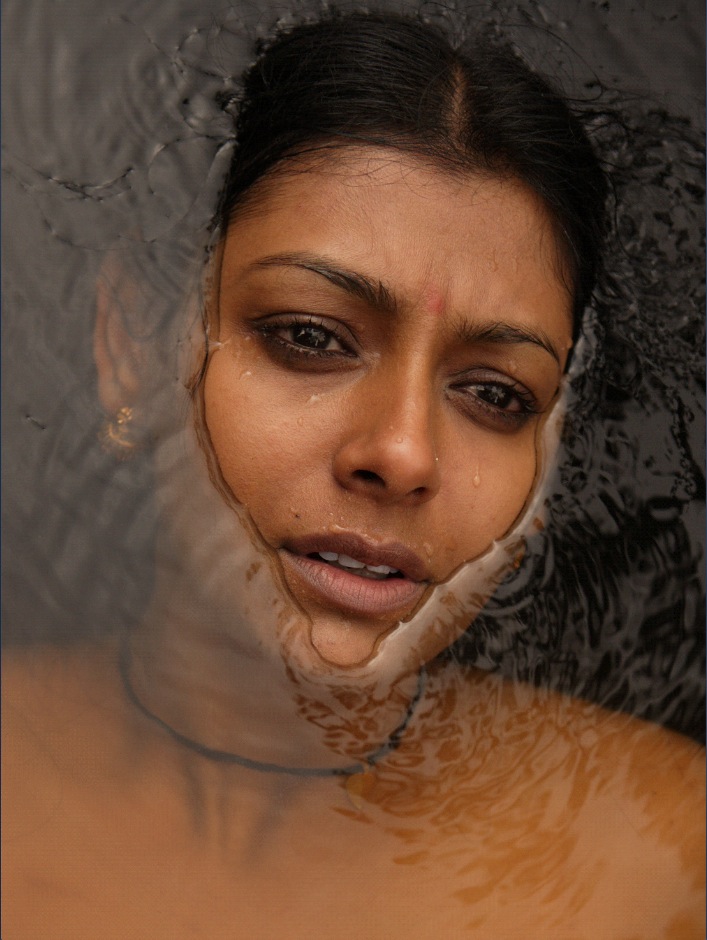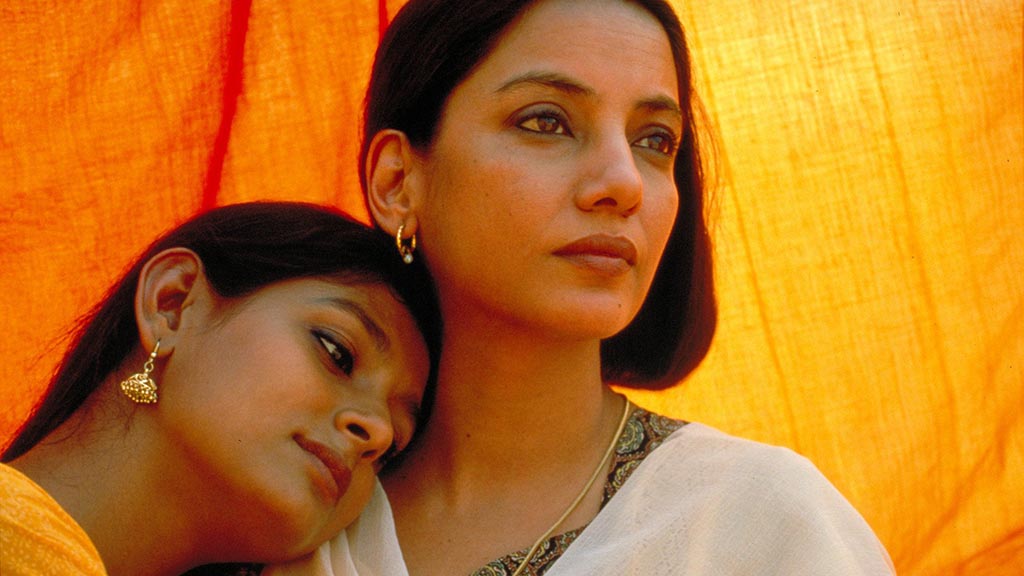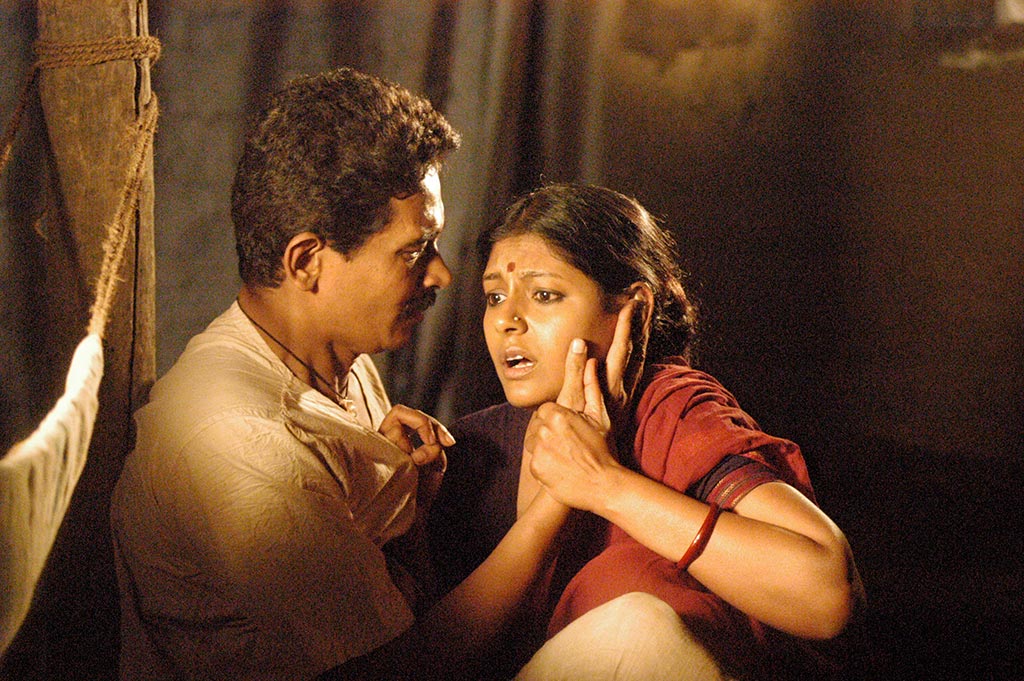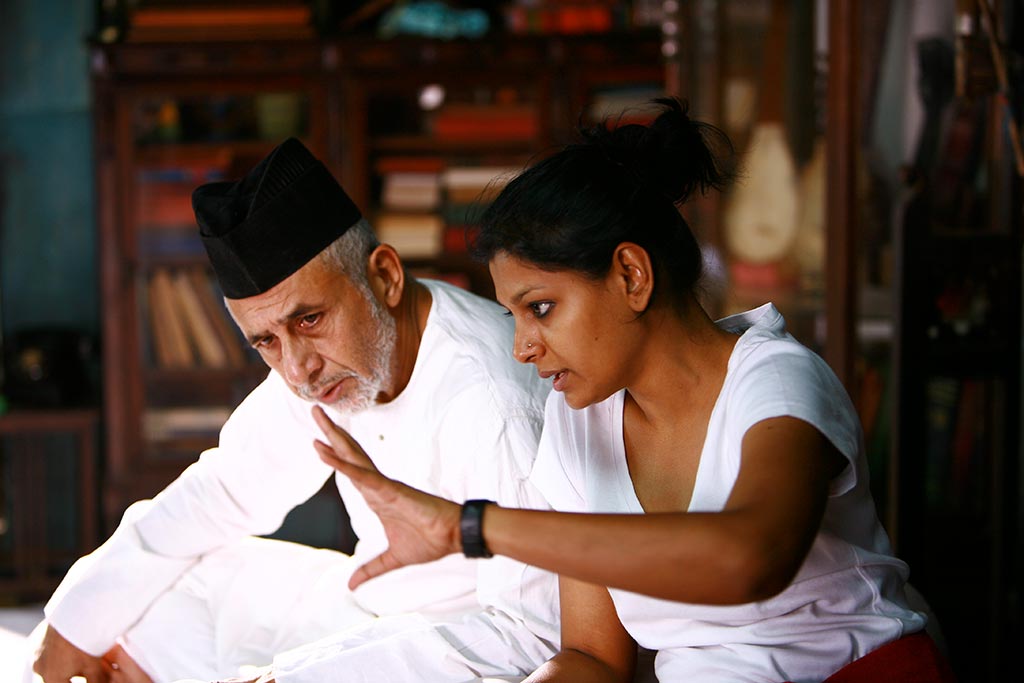A fire in her belly
In conversation with actor Nandita Das on gender sensitivity, changing perspectives and accepting differences with our cinematic narratives and not-so-cinematic lives.
Niharika Peri
Actor Nandita Das has a famous grouse: ‘In the film world, people consider me an activist; and among activists, I am considered an actor’. By her own admission, being a film actor has allowed her to advocate issues she feels passionately for. She sees it more as a means and less as an end. And this she does not restrict to just her ‘reel’ life; in real life too, she never shies away from speaking her mind about matters people from her fraternity consider controversial. ‘I remember when I did Fire, they said these are “Western” concepts, and we ‘“Indians” cannot be homosexuals, as if it wasn’t a human condition, but a human construct. I think we’ve come a long way since then,’ she says.
In a candid interview with us, she pointedly speaks about the duplicity in our culture, which admits to the existence of discrimination against LGBTQs and gender differences but talks about these serious issues in silent whispers or through concealed gestures.

Image courtesy of Nandita Das
Excerpts from the interview
As the daughter of an artist and as someone who has dabbled in different aspects of visual and performing arts, what do you see when you think of the twin aspects of gender and sexuality?
(Laughs) It’s a complex question to begin with when you say ‘what do you see?’ I think we all grew up thinking that gender was male and female, right? And later on also when I was doing my social work, we often talked about women’s issues as ‘gender’ issues, as this is the less privileged of the two genders. Therefore, when we say there is a gender issue, we assume it’s about women getting an unequal space in society. But thankfully now the awareness has grown and, with it, the vocabulary which is more reflective of the reality – meaning now when I think of gender and sexuality, I see the whole gamut of sexual orientations, not just the male and the female. It’s much wider and inclusive, be it the trans-sexual or the transgender or what we call the queer community.
With so much ado about anything to do with gender or sexuality in our recent past, do you think it is too utopian a concept to think about our society ever being rid of instances of discrimination, rejection or laws that criminalise someone’s identity? Especially given our glorious history of acceptance and, should I even use the word, tolerance?
India is a land of contradictions, where many things coexist, where we live in different centuries, simultaneously. And often we take two steps forwards and two steps backwards, and so we are progressing in some things and regressing in others. I think finally now there is a lot of pressure on the government and the judiciary to repeal this very archaic law – Section 377 that criminalises homosexuality – which was created during the British Raj. Even the British have thrown it out of their books in their country, but we are still holding on to it. In fact, it is one of the indicators to know if a country is progressive or not – by seeing what their rules are about homo-sexuality. There is a lot more awareness now in India than there was before, so I am optimistic that this law will be abandoned and decriminalisation of homosexuality will happen very soon. It had better!
And as for our glorious history, we have had both – we have crucified people and have been very accepting; but somehow we have managed a reasonable unity in diversity, a phrase we all learnt in school. The good thing is now there are a lot more conversations in the public domain which is forcing us to be less hypocritical about many things that we had shoved under the carpet earlier. It has been an unsaid secret for long and was accepted in a hidden way. But when you give it power, give it words that can be expressed and shared, you call a spade a spade, then the engagement with it is at a totally different level. Then there is no denial, the debates and conversations help in an acceptance that is more sensitive and true. And this for sure is growing. More so in social media, where the younger generation is keeping this issue alive, so we don’t have to pretend anymore that it doesn’t exist.

What was the impact of Fire on you? This is purely from the craft perspective of playing a role of the process of internalising a character and the impact or change, if any, on your perspective of gender and sexuality. What has that done to you?
A lot of people told me that I was very bold in doing Fire as my first film, but at that time I didn’t even know that there was going to be a second film! I just did it because it was an interesting script and, in some ways, an extension of the work I was doing on issues of women. Also, I thought it would be fun to do something new and, after all, I did enjoy acting in my street theatre days. Though I didn’t see it at all as a profession. In fact, I still see it as an interest and not as a career. But I think that was the beginning of my journey to understand the process of ‘othering’. When you don’t know about the ‘other’, you demonise it. There is also a fear of the unknown. But the minute you humanise the other, you realise that they’re not so different from whatever we may be or whatever we are conditioned to believe is right or the norm. Take Sita’s character, for instance. She was a rebel, a questioning and impulsive person. A lot like how I was or even am! So Sita was a very relatable character, but most people who ask me if it was the most difficult character I have ever played, are only thinking of her sexual orientation that she discovers in the story.
In some sense, Fire was a story of two unfulfilled marriages. In fact, many people in the LGBT community questioned why two women have to fall in love only when they have a bad marriage? And it’s absolutely right; that doesn’t have to be the only condition. But Fire was not a documentary, it was a story; and there ought to be many stories on same-sex relationships. Having said that, I think it was a good first head-on film on the subject as it was a gentle entry into a society which was deeply patriarchal and traditional. It kind of gave a justification to their coming together. And, like I said, working in Fire made me much more open as a person. Even though intellectually I had understood homosexuality, emotionally I hadn’t. Twenty years ago we didn’t really talk about all this in the open. I shot Fire in 1996, that’s over twenty years ago. As various people started pouring out their stories to me, I realised how insensitive and almost brutal our society can be; I have become a champion of the cause by default. I didn’t start out being one, but the denial, hypocrisy and lack of empathy by many, pushed me to stand up for the rights of the LGBT community. Personally speaking, it has definitely helped me become a more sensitive human being.

Do you think considering the dominating space that cinema occupies in popular imagination, it can help alter perceptions and prejudices about alternate sexuality in India? There have been films in the past, but do you think they are too few and far between?
Oh, they are definitely too few and far between. Indian films play safer than many others and therefore we don’t push the boundaries enough. Thankfully, there is the recently released Aligarh, about the struggles of a professor at a University, when his gay identity is revealed. Interestingly, he is uncomfortable with the word ‘gay’ because in his own vocabulary it doesn’t quite exist! To have a language to express is a necessary step in empowerment. The film is a sensitive portrayal of the character and the situation. Most mainstream films that have a gay character have mocked or trivialised the issue. A sincere, genuine effort to explore queer relationships is almost nonexistent in our films. Lately, a few sensitive regional films have been made, but we don’t get to see them in other parts of the country. To create awareness or reflect reality, we don’t need to only make homosexual-centric films; it can be just the inclusion of queer characters in a regular film. It would be just good to see the diversity that exists in society reflect in our films. Ten percent of the population is said to be homosexual, but where are they represented in our films? Often the mainstream cinema keeps reinforcing the stereotypes, as they have to please so many people to make it profitable. And this then dissuades them to take a risk and push boundaries, especially in mainstream cinema. Why can’t we show a journalist or a singer or a teacher as homosexual? Films could play such a significant role in countering stereotypes and making people reflect about their own prejudices.
Which brings us to the professional space of performing arts itself – are cinema and theatre, in your experience, accepting of different genders?
I think in the creative world, there is still a little more space. You see far more gays who have come out in the fashion, theatre and film industry (mainly behind the camera, and not those who are in front of the camera). These fields are more open and less rigid and traditional. But in spaces such as the corporate world and in some traditional professions, maybe the space doesn’t really exist. In mainstream cinema, within the industry people talk about who is gay or bisexual, but coming out is more difficult for them as there is so much fear of losing their appeal, their stardom that no one wants to risk it. It’s a pity as they could be such inspiring role models for those who are afraid to come out because of the stigma attached to it.

What is the role of the arts then, in such a scenario, where only a privileged few can be proud of their sexuality and others have to lead a stifled life of humiliation?
Well, the role of art is extremely important because art subliminally gets into people’s minds, their subconscious. That is why it threatens the conservatives, the orthodoxy the right-wingers. That is why they want to ban a book or a film or tear a painting down? After all what can a two-hour film do? What can a 200-page book or a 10’ x 10’ painting do? It is because they know it can actually impact our thoughts, our responses to situations, it can make us question things. It is said art is a mirror to society; and, therefore, if we actually mirror the diversity in society, we mirror the good and the bad. I’m not saying art alone can make a big change. It doesn’t create revolutions. But art can ask some very pertinent questions, it can shake us up. At the end of the day, it’s a neutral medium; you can do good and bad things with it. It can reinforce stereotypes or challenge them. Especially films have the power to be very influential. They bring us stories and characters that we otherwise would not know about, or show us sides to things we know of but are still unfamiliar with. Also, if we want to be part of the change, I think we have to speak up; we have to be part of movements, groups, marches and petitions to hasten the process of change. It is up to us if we want a more sensitive and compassionate society or not. A society that is more inclusive and less judgemental. One that believes not just in tolerance but in dignity for all.

